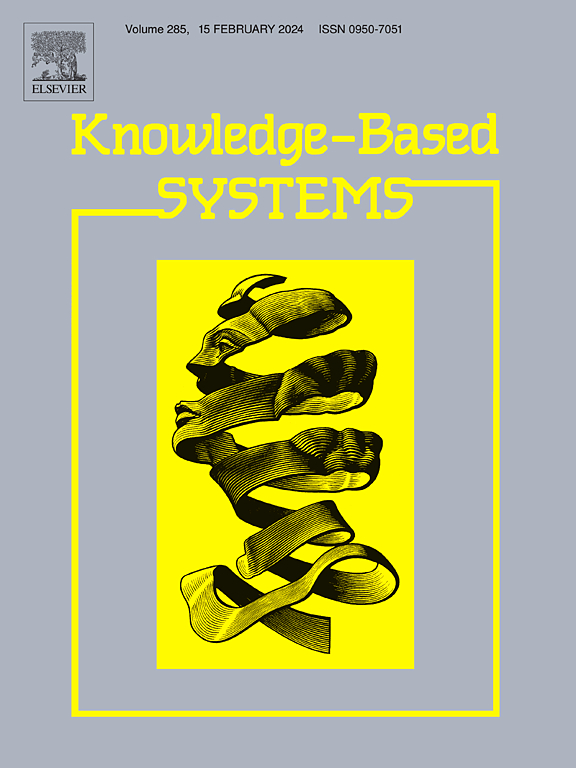MAS-DGAT-Net: A dynamic graph attention network with multibranch feature extraction and staged fusion for EEG emotion recognition
IF 7.2
1区 计算机科学
Q1 COMPUTER SCIENCE, ARTIFICIAL INTELLIGENCE
引用次数: 0
Abstract
In recent years, with the rise of deep learning technologies, EEG-based emotion recognition has garnered significant attention. However, most existing methods tend to focus on the spatiotemporal information of EEG signals while overlooking the potential topological information of brain regions. To address this issue, this paper proposes a dynamic graph attention network with multi-branch feature extraction and staged fusion (MAS-DGAT-Net), which integrates graph convolutional neural networks (GCN) for EEG emotion recognition. Specifically, the differential entropy (DE) features of EEG signals are first reconstructed into a correlation matrix using the Spearman correlation coefficient. Then, the brain-region connectivity-feature extraction (BCFE) module is employed to capture the brain connectivity features associated with emotional activation states. Meanwhile, this paper introduces a dual-branch cross-fusion feature extraction (CFFE) module, which consists of an attention-based cross-fusion feature extraction branch (A-CFFEB) and a cross-fusion feature extraction branch (CFFEB). A-CFFEB efficiently extracts key channel-frequency information from EEG features by using an attention mechanism and then fuses it with the output features from the BCFE. The fused features are subsequently input into the proposed dynamic graph attention module with a broad learning system (DGAT-BLS) to mine the brain connectivity feature information further. Finally, the deep features output by DGAT-BLS and CFFEB are combined for emotion classification. The proposed algorithm has been experimentally validated on SEED, SEED-IV, and DEAP datasets in subject-dependent and subject-independent settings, with the results confirming the model's effectiveness. The source code is publicly available at: https://github.com/cvmdsp/MAS-DGAT-Net
MAS-DGAT-Net:用于脑电图情感识别的多分支特征提取和分阶段融合的动态图注意网络
近年来,随着深度学习技术的兴起,基于脑电图的情感识别受到了广泛关注。然而,现有的大多数方法往往只关注脑电信号的时空信息,而忽略了脑区潜在的拓扑信息。为解决这一问题,本文提出了一种具有多分支特征提取和分阶段融合功能的动态图注意力网络(MAS-DGAT-Net),它将图卷积神经网络(GCN)整合到脑电图情绪识别中。具体来说,首先使用斯皮尔曼相关系数将脑电信号的差分熵(DE)特征重建为相关矩阵。然后,利用脑区连接特征提取(BCFE)模块捕捉与情绪激活状态相关的脑连接特征。同时,本文引入了双分支交叉融合特征提取(CFFE)模块,该模块由基于注意力的交叉融合特征提取分支(A-CFFEB)和交叉融合特征提取分支(CFFEB)组成。A-CFFEB 利用注意力机制从脑电图特征中有效提取关键信道频率信息,然后将其与 BCFE 的输出特性融合。融合后的特征随后被输入带有广泛学习系统的动态图注意模块(DGAT-BLS),以进一步挖掘大脑连接特征信息。最后,将 DGAT-BLS 和 CFFEB 输出的深度特征结合起来进行情绪分类。所提出的算法已在 SEED、SEED-IV 和 DEAP 数据集上进行了实验验证,包括依赖主体和不依赖主体两种设置,结果证实了模型的有效性。源代码可在以下网址公开获取: https://github.com/cvmdsp/MAS-DGAT-Net
本文章由计算机程序翻译,如有差异,请以英文原文为准。
求助全文
约1分钟内获得全文
求助全文
来源期刊

Knowledge-Based Systems
工程技术-计算机:人工智能
CiteScore
14.80
自引率
12.50%
发文量
1245
审稿时长
7.8 months
期刊介绍:
Knowledge-Based Systems, an international and interdisciplinary journal in artificial intelligence, publishes original, innovative, and creative research results in the field. It focuses on knowledge-based and other artificial intelligence techniques-based systems. The journal aims to support human prediction and decision-making through data science and computation techniques, provide a balanced coverage of theory and practical study, and encourage the development and implementation of knowledge-based intelligence models, methods, systems, and software tools. Applications in business, government, education, engineering, and healthcare are emphasized.
 求助内容:
求助内容: 应助结果提醒方式:
应助结果提醒方式:


